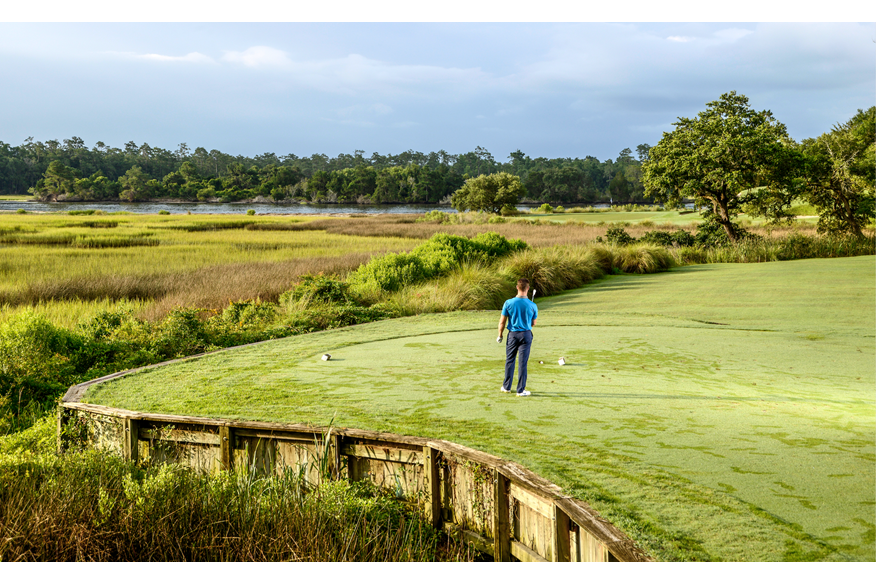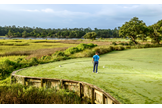Play Smarter: Master The Short Par 3
Last updated:
Play Smarter: Five tactics on how to master the short par three
The first thing you have to guard against on short par 3s is complacency. On the scorecard they can look like breather holes, especially after a run of long par 4s and par 5s, and the sight of the close green and nice, level tee does little to dispel that perception. But as in this case, short holes are often the most protected.
Water, heavy, deep bunkering and tucked pins are all to be expected, and if you are not fully focused you could be marking down an ugly score against a beautiful hole. Follow these five tactics and you won’t fall short..
How do I avoid complacency?
By focusing on your pre-shot activity and routine. Just because this shot is short doesn’t mean you can afford to approach it without the same discipline you’d take for a tight drive. Pick a clear and specific target and find a spot on that line, just in front of the tee, to help your alignment. Use your practice swing to rehearse the shot you want to play, then step in and play the shot with the same purpose and focus you’d use for any shot.
I could almost throw it on there: Surely my target is the pin?
It depends where it is cut. This one, central on the green, is a definite green light. But architects like to protect short holes by creating green shapes that afford tight pin locations, and greenkeepers just love putting them there!
Often you will be faced with a sucker pin, just yards from the water or the hole’s deepest bunker. When this is the case give yourself a reasonable margin for error – perhaps 10-15ft to the open side of the pin – and focus on hitting the ball pin high.
What distance control keys should I be looking at?
Wind, club selection and rhythm. Downwind you might favour a more lofted club and a more aggressive swing, which promotes spin and a higher flight to hold the green. If the wind is into or across, a straighter- faced club and a shorter, quieter action can keep height and spin off the ball, helping you control its line and length.
If wind isn’t a factor, work on creating a picture for the shot before selecting the club and swing length that matches it. Avoid deceleration by matching backswing and through-swing lengths.
How can I take advantage of the teeing ground?
In terms of distance, don’t forget you can go up to two club lengths back from the markers. That can help if you are between clubs – often, going back and taking the stronger of the two pays dividends. But you can also open up the hole by using the tee’s full width.
If the pin is cut on the right moving to the left gives you a friendlier line in, shots landing short and left bouncing towards the flag; the right side of the tee typically offers a much less-forgiving landing area.
What else should I take in to account?
Short holes are often played up or down hills, so be sure to factor in the distance effects of this – as a guide, work out the yardage rise or drop, then add/subtract it to your yardage to give you a new distance target. Also, if you don’t have the honour, watch your playing partners’ shots carefully to assess the effects of wind and the firmness of the green. This becomes valuable information when you are working out what club and shot you want to hit.

